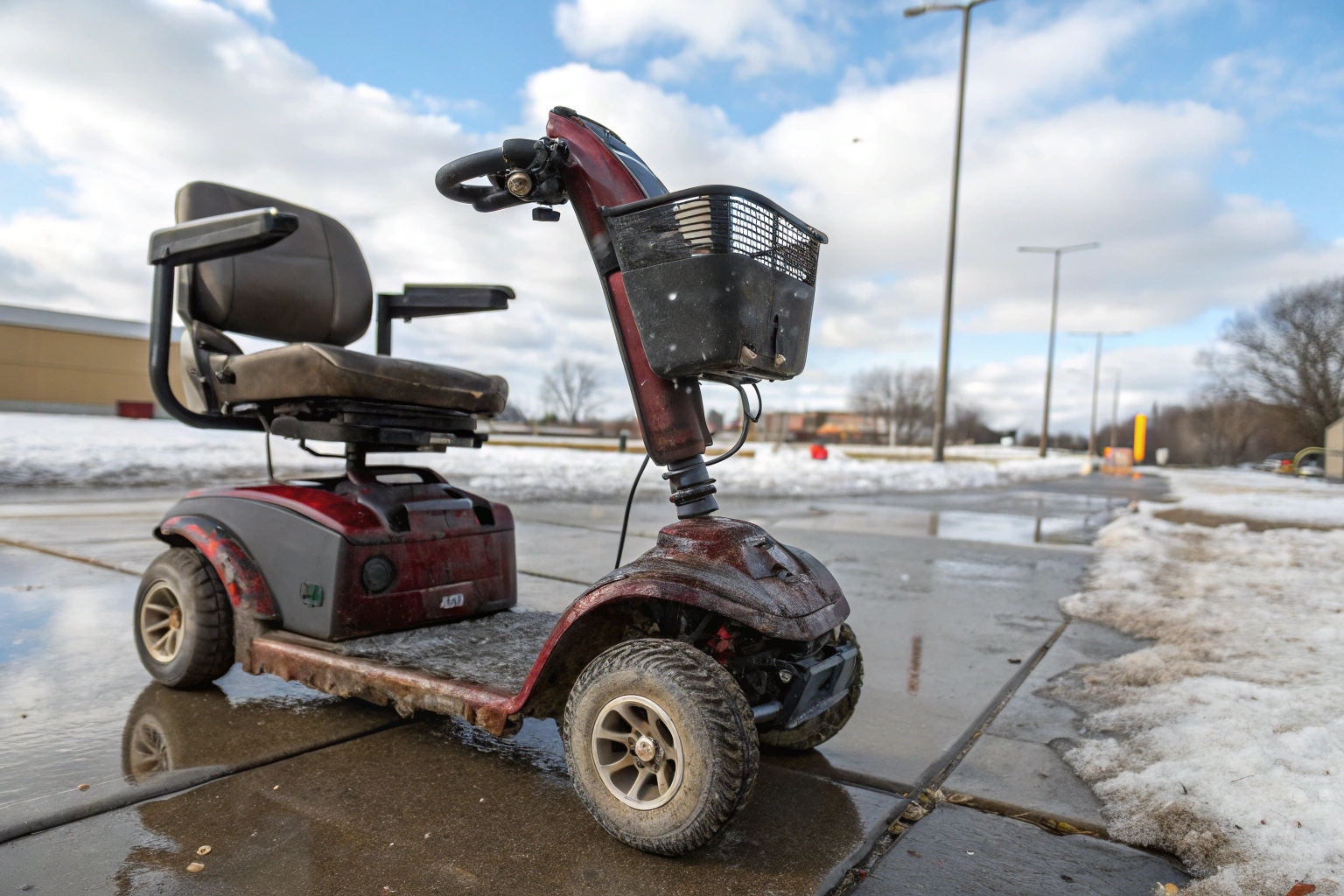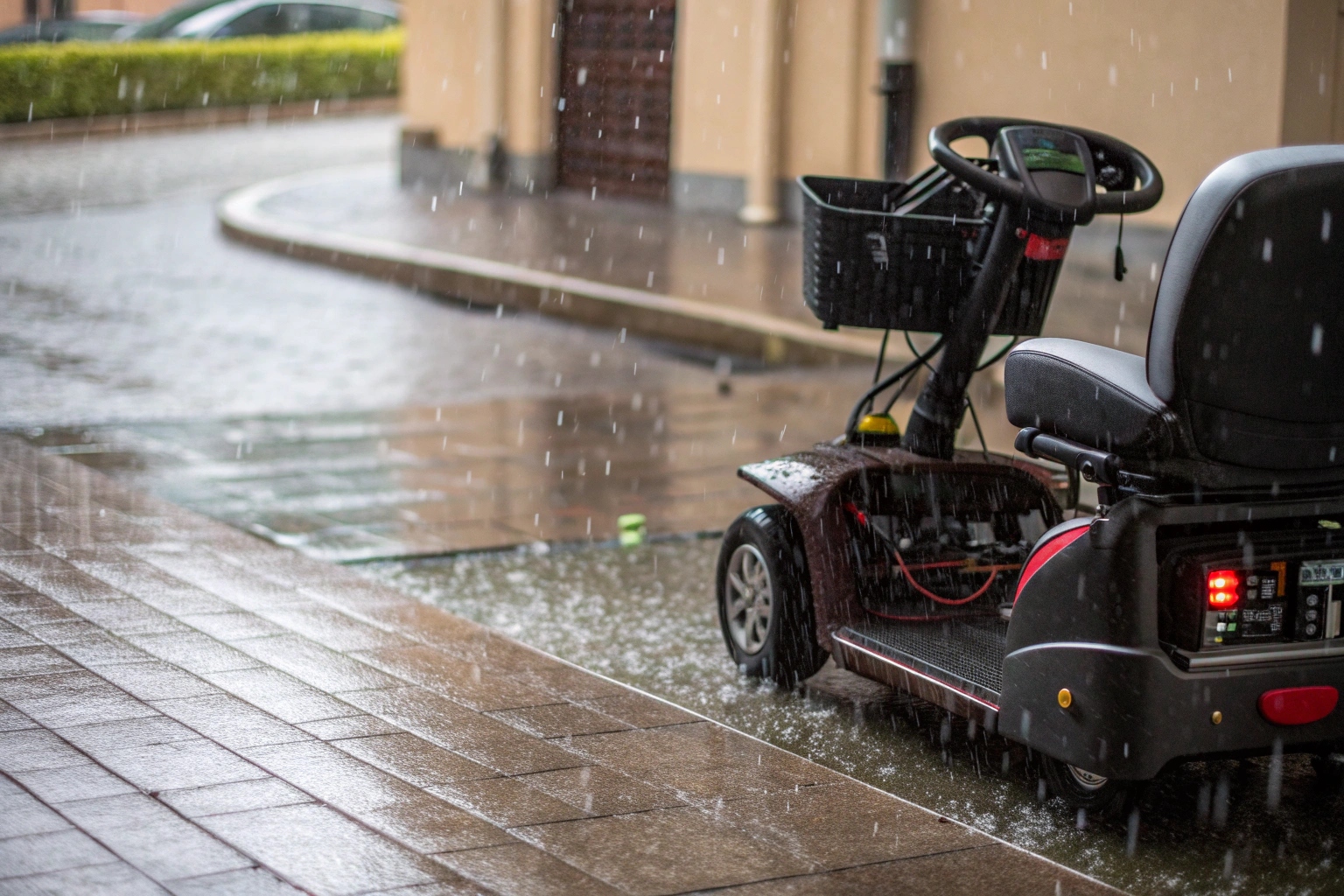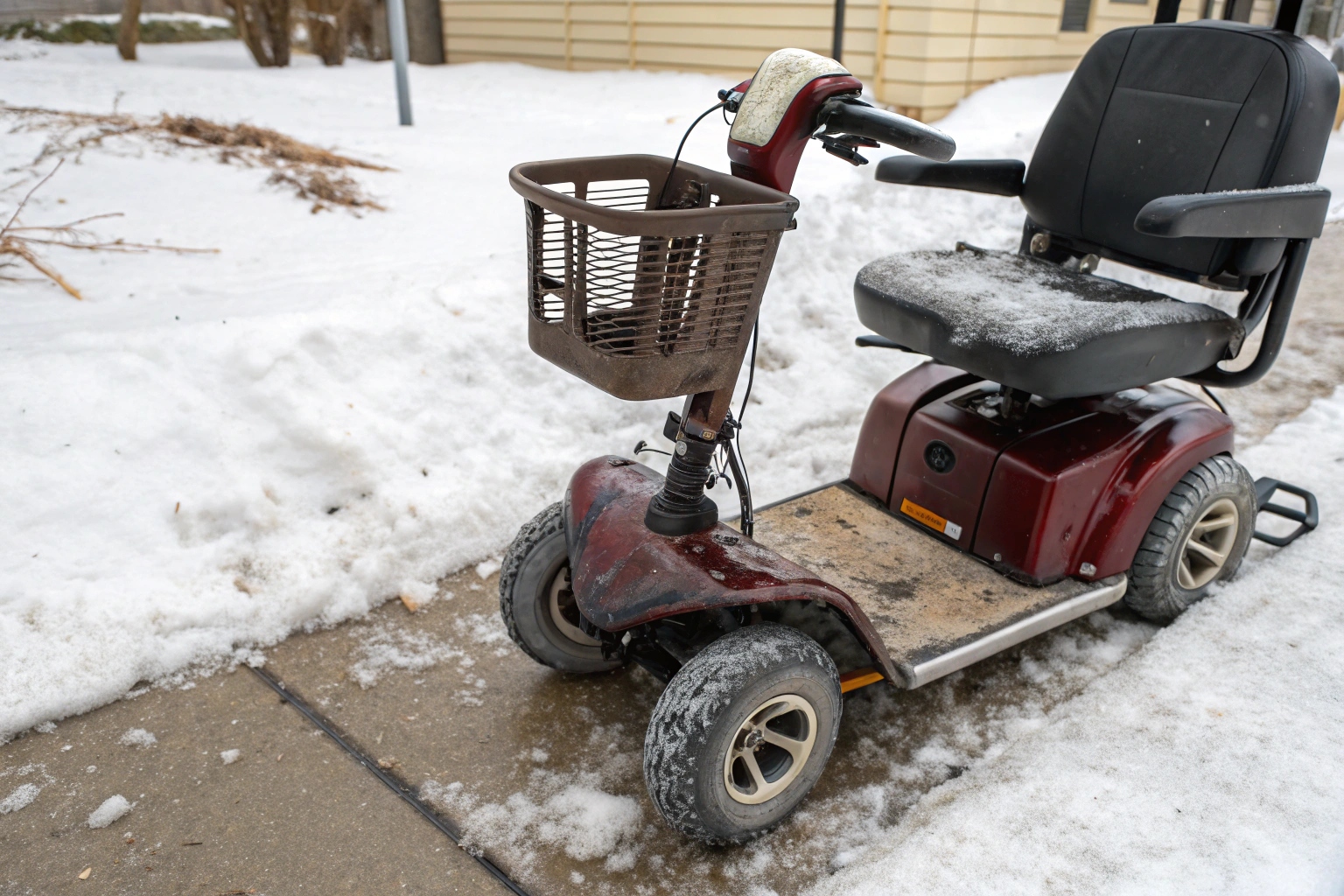Ikwesiri nkwa onye ahịa gị na-adịgide adịgide, mana ọ dara mbà oge nke ahapụghị ya n'èzí. Nke a na-eduga na nkwupụta akwụkwọ ikike, ndị ahịa iwe, ma mebie aha gị.
Mmiri ozuzo, anyanwụ siri ike, anwụ na-ajụ oyi, snow bụ ndị iro niile nke scooter ngwa ngwa. Ọnọdụ ọ bụla na-awakpo akụkụ dị iche iche nke ụgbọ ahụ, site na elektrọniki na batrị na etiti ahụ na mejupụtara plastic, na-akpata ọdịda nke aka.

From our factory, we ship scooters all over the world, to every kind of climate imaginable. We see the repair reports and warranty claims that come back. The single biggest factor in a scooter's lifespan is how it's stored. A scooter that is protected from the elements will last for years, while one left outside will quickly develop problems. The best advice you can give your customer is simple: when you're not using it, keep your scooter indoors or under a protective cover. Let's break down exactly what happens when they don't.
Kedu ụdị mkpughe mmiri mmiri nwere ike imebi scoolir na-agagharị?
Onye ahịa ejidela na mmiri ịsa ahụ ma na-eche na ọ nweghị ya. Mgbe izu gachara, skooter na-amalite ime ihe ịtụnanya ma ọ bụ kwụsị ọrụ kpamkpam n'ihi corrosion zoro ezo.
Ọbụna mmiri na-ezo nwere ike ịbụ nsogbu. Ihe ndị na-eme ngagharị agagharị abụghị mmiri mmiri zuru oke. Mmiri nwere ike ịhụba n'ime ihe ndị na-ejikọ tiller na njikọta eletrik, na-eduga na mgbatị na nchara. Naanị ụdị dị iche iche nwere ọkwa ipx4 ma ọ bụ elu na-eguzogide ọgwụ.

This is one of the most common issues we see. People assume a vehicle made for outdoor use is waterproof, but that's rarely the case. The most vulnerable area is the tiller, where the throttle, battery gauge, and controls are located. These components are electronic and very sensitive to moisture. We explain the Nchedo Insress (IP) to our B2B partners so they can manage their customers' expectations. A higher rating means better protection, but most standard scooters have a low rating or none at all. If a scooter does get wet, the advice is simple: wipe it down immediately with a dry cloth, paying special attention to the control panel and charging port. Store it in a dry place to let any hidden moisture evaporate. This simple habit can prevent a very expensive repair down the road.
Ghọpụta Nchọpụta Mgbakwụ (IP
| Ngosi | Nchedo Nchedo | Ezi Pụtara |
|---|---|---|
| Enweghị ọkwa | Enweghị nchebe | A ga-ederịrị ya. Zere mmiri niile. |
| IPX4 | Splash-Gones | Nwere ike ijikwa mmiri ọkụ site na puddles ma ọ bụ mmiri ozuzo. |
| Ipx7 | Imikpu | Enwere ike itinye ya n'okpuru (obere maka scooters). |
Kedu ka ìhè anyanwụ si na oke okpomọkụ na-emetụta ihe ndị na-eme nganga?
Onye ahịa na-eme ka a skoo na-adọba ụgbọala ha n'ụlọ ahụ kwa ụbọchị. Mgbe otu oge ọkọchị gachara, a na-ebipụ batrị ahụ na ọkara na ahụ rọba na-adịkarị jụụ na cracked.
Direct sun and high heat are a powerful combination that degrades a scooter inside and out. UV rays damage the plastic and tires, while high temperatures permanently destroy the battery's ability to hold a charge, shortening its life.

We see this often with scooters used in tropical or desert climates. The damage happens in two ways. First, ultraviolet (UV) radiation from the sun attacks the scooter's exterior. It breaks down the chemical bonds in plastic, making it brittle and prone to cracking. It also fades the paint and degrades the rubber in the tires. Second, and more importantly, heat kills the battery. A batrị Lithium stored or used consistently at 45°C can lose its capacity twice as fast as one kept at 25°C. This damage is permanent. The easiest way to prevent this is to park in the shade. If shade isn't available, using a simple, reflective scooter kpuchie ya nnukwu nnukwu. Ọzọkwa, nye ndị ọrụ gị ka ha ghara ịna-akwụba batrị mgbe ọ na-ekpo ọkụ ruo mgbe ogologo njem gachara. Ka ha jụọ oyi.
Ọnọdụ oyi na freesing ọnọdụ na-emebi arụmọrụ?
N'ụbọchị oyi nke oge oyi, onye ahịa gị na-akpọ gị, na-echegbu onwe gị na a gbajiri agbaji na 30% na-adịkarị na-adịghị ike.
Yes, cold weather significantly reduces battery performance. While it doesn't cause permanent damage, freezing temperatures can temporarily cut a scooter's range by up to 20-30% and make the throttle response feel sluggish. The battery's power will return once it warms up.

Nke a bụ nsogbu nke kemistri, ọ bụghị ntụpọ. Oseihe nwoke kemịkalụ kemịkalụ dị n'ime batrị that produce electricity slow down dramatically in the cold. It's important to explain this to customers in colder regions to prevent unnecessary panic and service calls. The effect is temporary. Think of it like a person trying to run on a freezing morning—they move much slower. The best way to manage this is to store the scooter in a warmer place, like a garage or inside the house. If the battery is removable, bringing just the battery inside overnight will make a huge difference in its performance the next day. Customers should also plan for shorter trips in the winter and understand that the range meter will drop more quickly than it does in the summer. They are not breaking the scooter; it's just the nature of batteries in the cold.
Olee mmetụta snow na ice na-enwe na sistemụ sọọsọ?
A user forces their scooter through a snowy path. Later, they find the brakes aren't working properly and they hear grinding noises from the wheels and motor.
Snow and ice cause direct mechanical damage. Packed snow can jam the brakes and drivetrain. More importantly, corrosive road salt used to melt ice can quickly rust the scooter's frame, wheel bearings, and electrical connections, leading to major failures.

While cold affects the battery, snow and ice attack the scooter's physical structure. Mobility scooters are not snowmobiles. Their small wheels and low ground clearance are not designed for deep snow. When snow gets packed into the wheel wells and around the motor, it can interfere with moving parts. As it melts and refreezes, it can seize the brakes or damage seals. The biggest threat, however, is road salt. It's incredibly corrosive. If a customer drives through treated slush, the salt spray gets into every part of the scooter's undercarriage. We strongly recommend that users rinse off the bottom of their scooter with fresh water after driving in these conditions and dry it thoroughly. For our distributors in snowy regions, we suggest offering winterization services and accessories like tiller covers and motor shields to give the scooter an extra layer of protection.
Mmechi
The outdoor elements are a mobility scooter's greatest enemy. The single best way to ensure a long service life is to store the vehicle in a dry, sheltered location away from extreme temperatures.

